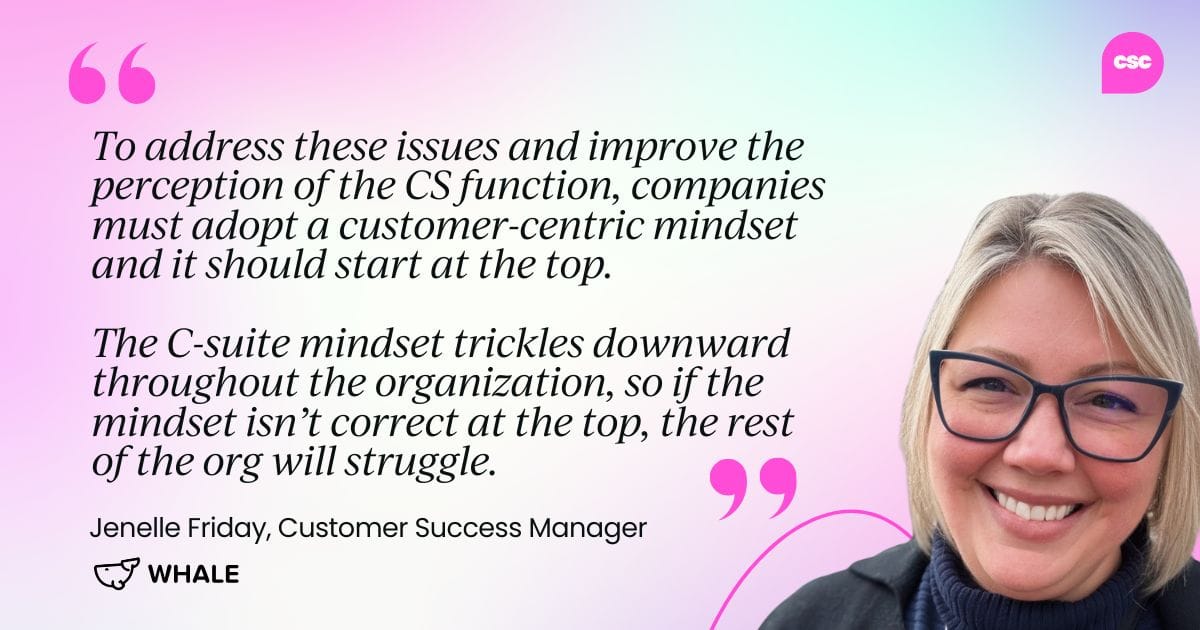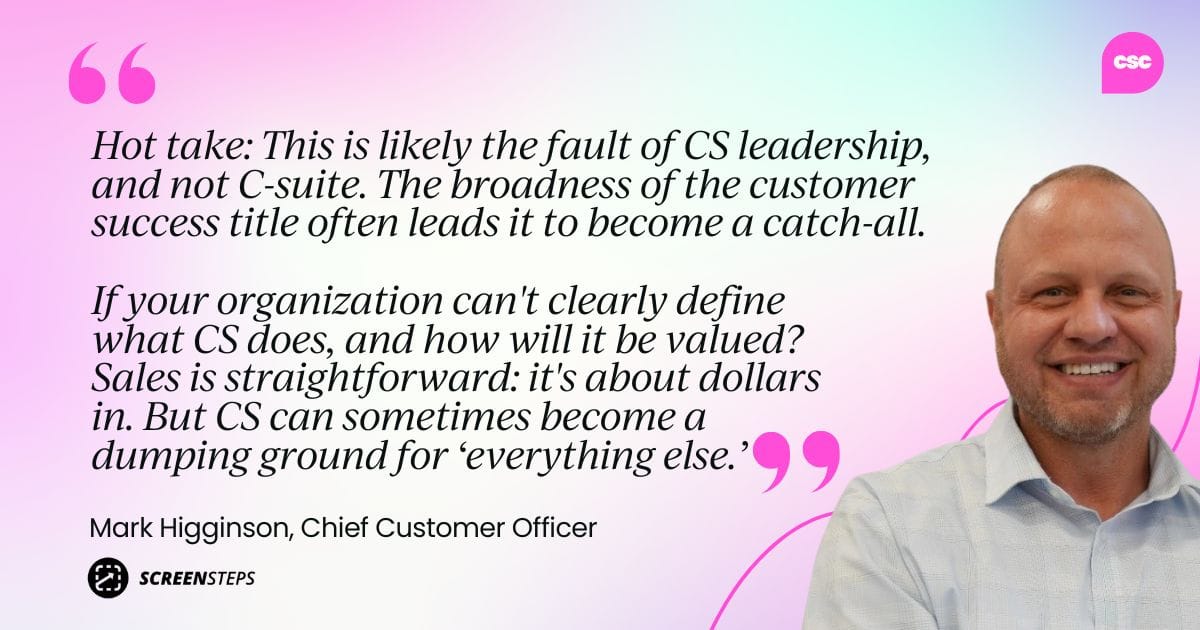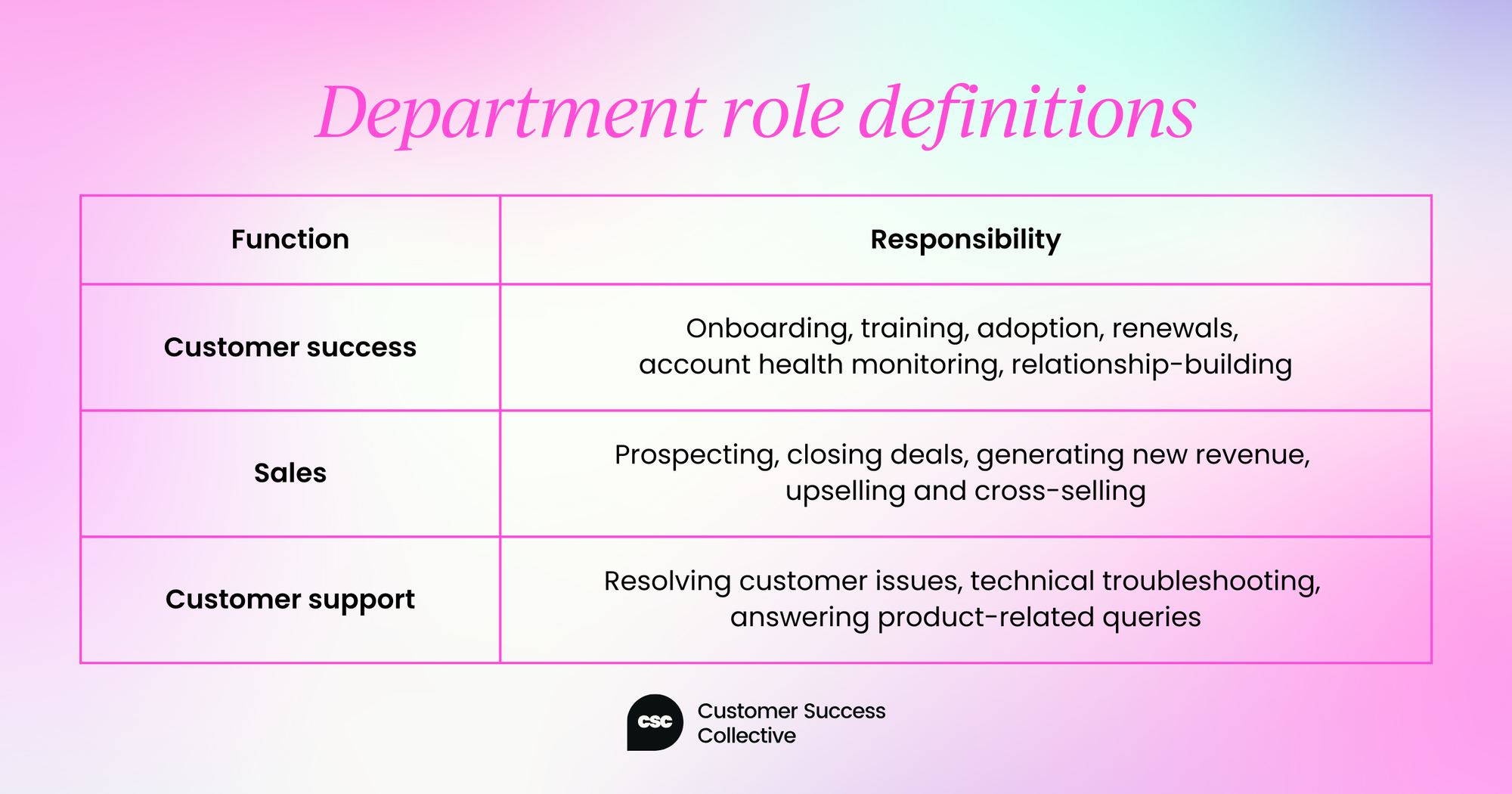Customer success (CS) has evolved from a reactive, support-based function to a strategic, revenue-driving discipline. Yet, despite its increasing importance, not all organizations recognize its full value at the executive level. So why do over one-third of CS leaders feel undervalued by their executive teams? Our research points to several key factors.
According to the State of Customer Success Leadership 2024 report:
- 64.6% of CS leaders believe their role is valued by their company’s C-suite
- 35.4% do not, signaling a significant disconnect.
This disparity suggests that many companies still struggle to integrate CS into their broader business strategy.
In this article, we’ll explore:
- Why executive buy-in matters for customer success.
- What’s causing the disconnect
- Consequence of the disconnect
- What this means for the future of CS leadership.
Why executive buy-in matters for CS success
There’s no sugar-coating this: executive buy-in is non-negotiable for CS teams to operate effectively and drive business impact. Without it, customer success is in real danger of being underfunded, misaligned with company objectives, and viewed as a cost center rather than the growth driver it is.
This trinity of heinous scenarios needs to be avoided no matter what. Here’s why C-suite support is essential.
Strategic alignment with business goals
There’s a certain magic – a je ne sais quoi, if you will – that happens when customer success teams are aligned with company-wide priorities.
But without executive sponsorship, customer success initiatives run the risk of being disconnected from wider business objectives.

Customer success as a revenue driver, not a cost center
Historically, CS has been viewed as a post-sale support function rather than a revenue-generating team.
However, with the rise of subscription-based business models, CS is responsible for retention, expansion, and product adoption, it becomes inextricably linked to revenue growth. Suddenly, retention and account expansion are just as important as new sales.
Despite CS’s clear impact on revenue growth, many organizations still fail to integrate it strategically. So, what’s holding CS back?
What’s causing the disconnect?
Misaligned goals and lack of clear metrics
The higher up you climb in a company, the more you look at the business holistically, which is why it’s important to have clear, correlating metrics; cold, hard data that paints a picture of a business’s strengths and weaknesses.
Executives prioritize measurable business impact – it’s what makes them tick. Think: revenue growth, cost reduction, and market expansion. Sadly, the customer success teams that fail to connect their work to financial outcomes risk being sidelined.
- Common pitfall: CS teams focus on customer experience metrics (NPS, CSAT) without tying them to revenue impact.
- Solution: CS leaders should align their KPIs with company-wide goals (e.g., reducing churn, increasing customer lifetime value, and NRR).
Limited visibility at the executive level
Representation matters. Period. If customer success leaders aren’t included in C-suite meetings and strategic discussions, their impact can quite easily go unnoticed.
We’ve all heard the phrase “No man is an island,” and the same applies to CS. Without an executive champion, someone fighting in their corner, CS teams will struggle to gain credibility and influence within the organization.
It's vital to have every department head represented in these high-level meetings to help put forward their case and demonstrate how each department can contribute to and influence the company's overall strategic direction and bottom line.
Customer success teams are often the primary touchpoint with existing customers and have invaluable insights into customer needs, challenges, and opportunities that should directly inform executive decision-making.
When CS lacks executive representation, it can lead to resource constraints, limited strategic input, and difficulty implementing customer-centric initiatives across the organization. This can create a dangerous cycle where the CS function's strategic value remains underappreciated, further reinforcing its peripheral status in organizational decision-making.
One problem could be that CS reports to mid-level management, making it difficult to gain executive attention. A way around this is to create a C-suite role, a champion for customer success like a chief customer officer (CCO) to help position CS as a strategic function.
Unclear role definitions and overlapping responsibilities
CS can sometimes become a catch-all department, handling onboarding, support, renewals, advocacy, and education. This ambiguity can lead to misunderstandings about its core function.

You may have a sales team that owns renewals and upselling, but customer success is responsible for cross-selling. The mixture of expansion responsibilities leaves customer success without a clear opportunity to demonstrate revenue growth. Or, you may have a customer success team responsible for troubleshooting issues, which is traditionally the remit of support.
A simple solution is to clearly define CS responsibilities and separate them from support and sales functions. Until you tighten up what CS truly is and ensure you’re measuring clear outcomes, it will always be difficult to demonstrate value or be perceived as valuable.

Consequences of the disconnect
Budget and resource allocation
There’s a saying that a bad workman always blames his tools, but sometimes tools are the differentiator between a good job and a bad job. It might make your CFO wince, but CS functions require investment: think technology, automation tools, and specialized personnel to scale efficiently.
That doesn’t mean to say you have to throw money at your customer success team.
For example, it makes zero sense to pay for a fully stacked customer success platform like Catalyst or Totango when your CS team comprises of one person and your customer base is less than 1,000. At that point, you’re throwing money down the drain as half of the capabilities of the platform is wasted on your org.
But a lack of C-suite recognition often translates to insufficient budget allocation, making it harder for CS teams to deliver meaningful results.
Cross-departmental influence
Customer success is like the sociable web that connects all parts of the business. Typically, customer success managers (CSM) tend to work most closely with sales, marketing, product, and support. And this collaboration has the potential to work swimmingly.
However, without C-suite advocacy, CS leaders may struggle to drive collaboration and integrate customer insights into key business decisions. If other teams notice that CMOs, CROs, and COOs are overlooking customer success – or worse, treating it like a support function – then those other departments aren’t going to treat CS with the same care.
There’s a real danger that timelines and processes will be missed or treated laxly, meaning CSMs could miss key deadlines that can have a knock-on effect on their customers.

The future of customer success leadership
Organizations must recognize CS as a strategic function to bridge the executive disconnect. CS leaders should take wind of this insight and look to:
- Tie CS initiatives to revenue impact.
- Increase executive-level engagement.
- Position CS as a strategic, revenue-driving function.
Have we flicked on a lightbulb in your head? Are you interested in knowing more about the current leadership landscape? You can satisfy that curious itch by downloading our report: The State of Customer Success Leadership 2024.



 Follow us on LinkedIn
Follow us on LinkedIn





